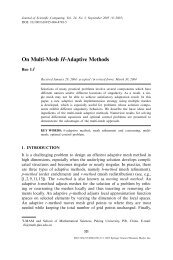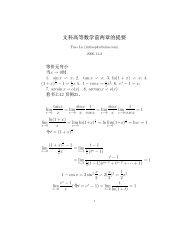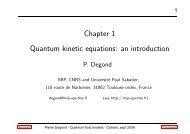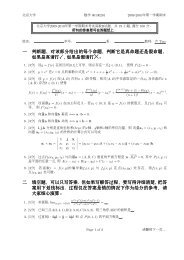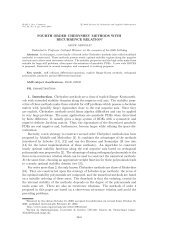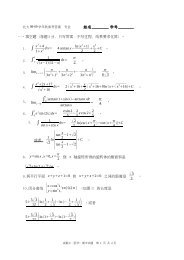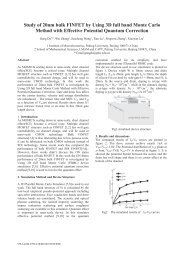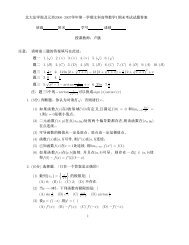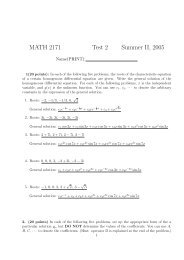Abstract
Abstract
Abstract
You also want an ePaper? Increase the reach of your titles
YUMPU automatically turns print PDFs into web optimized ePapers that Google loves.
CHAPTER 4. THEORY 100<br />
denote this dependence by Tu(x, k − k ′ ). We have for k>0that<br />
G2(un)(x, k) − G2(um)(x, k) = 4Cτ<br />
hk<br />
− 4Cτ<br />
hk<br />
x Kmax<br />
0<br />
−Kmax<br />
x Kmax<br />
0<br />
−Kmax<br />
This is the same as looking at three separate terms, where<br />
G2(un)(x, k) − G2(um)(x, k) = 4Cτ<br />
x<br />
hk 0<br />
+ 4Cτ<br />
x<br />
e<br />
hk 0<br />
C(z−x)<br />
Kmax<br />
k<br />
−Kmax<br />
+ 4Cτ<br />
x<br />
e<br />
hk<br />
C(z−x)<br />
k<br />
0<br />
e C(z−x)<br />
k<br />
Kmax<br />
e C(z−x)<br />
k um(z,k ′ )Tum(z,k − k ′ )dk ′ dz<br />
e C(z−x)<br />
k un(z,k ′ )Tun(z,k − k ′ )dk ′ dz.<br />
−Kmax<br />
Tū(z,k − k ′ )[um(z,k ′ ) − un(x, k)] dk ′ dz<br />
[Tum(z,k − k ′ ) − Tū(z,k − k ′ )] [um(z,k ′ ) − un(x, k)] dk ′ dz<br />
Kmax<br />
−Kmax<br />
un(x, k)[Tum(z,k − k ′ ) − Tun(z,k − k ′ )] dk ′ dz<br />
= G 1 (x, k)+G 2 (x, k)+G 3 (x, k).<br />
Let δ>0. For k>δ, (as in the case for the G1 term) we have the first term, G 1 (x, k),<br />
as an integral operator whose input is an L 2 ([0,L] × [−Kmax,Kmax]) function with a<br />
kernel function given by<br />
4Cτ<br />
hk<br />
e C(z−x)<br />
k Tū(z,k − k ′ ).<br />
For k > δ, the kernel function is continuous. Therefore, the integral operator is<br />
a compact map from L 2 ([0,L] × [−Kmax,Kmax]) to C([0,L] × [δ, Kmax]). Since<br />
un(x, k) ⇀ ū(x, k) weaklyinL 2 ([0,L] × [−Kmax,Kmax]), then the first term con-<br />
verges uniformly to zero. So we can make the first term as small as we want for<br />
δ




